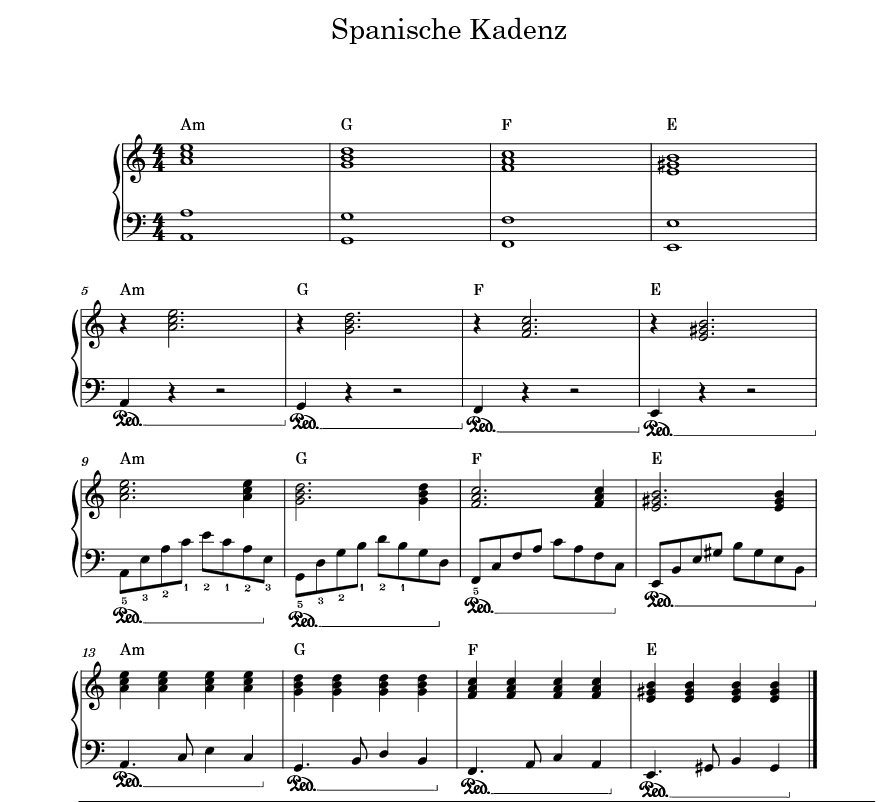Spanish Cadence

Practical Exercise: The Spanish Cadence – from the Book Piano Chords Step by Step
Why the Spanish Cadence?
The Spanish cadence is one of the most well-known chord progressions in popular music and is
often associated with a Latin American flair or Spanish guitar, such as Flamenco. It’s not only very
catchy in sound but also particularly easy to learn – ideal for beginners and for improvisation.
Typical Chord Progression:
If we start in the key of C major or its relative minor, A minor, the classic chord progression is:
Am – G – F – E (or E7)
This sequence results from a simple movement of the bass notes:
Root → whole step down → whole step down → half step down
Example in A minor:
• A → G → F → E
Or in another key, for example E minor:
Em – D – C – B (or H in German notation)
Again, the pattern is identical: E → D → C → B (H)
This structure makes the Spanish cadence universally applicable – it works in any key and always
sounds harmonious and distinctive.
Tip for Your Piano Improvisation Practice:
Start by playing the chord progression with your left hand in simple root positions. Once you feel
comfortable, begin improvising with your right hand – for example, using notes from the
appropriate scale (A minor for Am, E minor for Em). You’ll notice how naturally melodies can
emerge.
Practice Instructions:
1. Play the chord progression in A minor (Am – G – F – E) with your left hand, each chord in
root position. Hold each chord for four beats.
2. Repeat the sequence several times until the transitions are smooth.
3. Add a simple improvisation with your right hand – use the notes of the A minor scale (A – B
– C – D – E – F – G).
4. Focus on flowing movements and rhythmic variety.
For Advanced Players:
• Inversions: Play the chords in different inversions (e.g., Am in 1st or 2nd inversion).
• Rhythmic Patterns: Play the chords using different rhythmic styles – for example, a ballad or
Latin rhythm.
